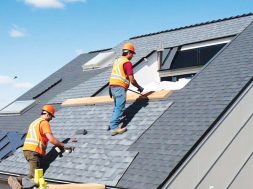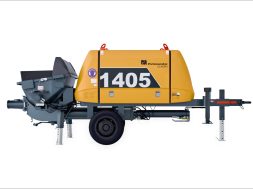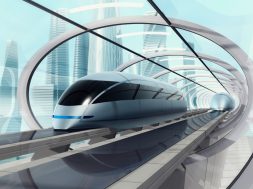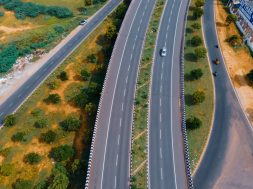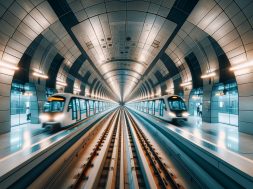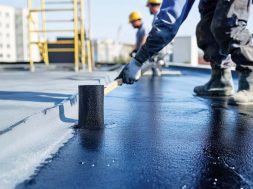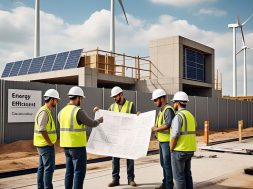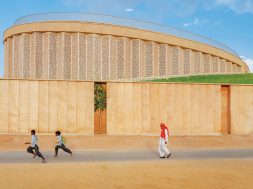Sustainability in roofing

India’s rapid urbanisation and economic growth have increased the demand for sustainable building solutions. Energy-efficient lighting, waste management, and water conservation often take centre stage in sustainability debates. But are critical factors like roofing and insulation being overlooked? Similarly, with PEBs gaining momentum in industrial construction as the most desired sustainable option, are designing sustainable roofing systems for PEBs posing challenges? Roofing, as a key component in sustainable construction, is not just about using sustainable/recycled materials. It is time to think about roofing systems beyond their aesthetic values! Let’s delve into how this can be achieved.
As India advances its green building initiatives, energy-efficient, climate-responsive, and durable roofing solutions are critical in balancing environmental responsibility with economic growth. Roofing systems are far more than aesthetic elements; their design, materials, and functionality profoundly impact a building’s energy efficiency, water management, and overall environmental footprint.
How do roofs influence energy efficiency?
Gopalakrishnan, Managing Director, GBCI, exemplifies how roof design plays a pivotal role in regulating a building’s energy use. Properly insulated roofs limit heat transfer, reducing reliance on heating and cooling systems and thereby lowering energy consumption. A practical example of this is that of the Infosys Chennai Campus. The campus optimised energy efficiency by adding insulation and reducing glass usage in the façade, which reduced solar heat gain by 25 percent, significantly reducing cooling energy needs. Similarly, reflective roofing materials with a high Solar Reflectance Index (SRI) help combat the urban heat island effect by minimising heat absorption and keeping buildings naturally cooler.
Ankit Patel, Associate Director, Ameya PEB, illuminates the innovative options available currently that help make roofing systems energy efficient. Cool roof coatings and reflective roofing help minimise heat absorption. They facilitate the sustainability motto by reducing the urban heat island effect, lowering cooling costs, and extending roof lifespan by reducing thermal expansion. These coatings also enable compliance with LEED and ENERGY STAR® sustainability standards.
Other innovative options are polycarbonate and translucent roof panels and green roof systems. High-impact polycarbonate sheets allow natural daylight penetration while maintaining insulation, reducing lighting costs and carbon footprint. Green or living roofs incorporate vegetation layers, offering insulation and ecological benefits. These enhance biodiversity by supporting plant and insect life, improving thermal regulation, reducing HVAC load, and improving air quality by filtering pollutants.
Material selection and lifecycle factors
Gopalakrishnan further shares insights on how material selection is pivotal in ensuring long-term sustainability. In roofing, choosing materials that offer thermal insulation, moisture resistance, and recyclability is important. These determine a building’s performance over its lifecycle. Materials with lowembodied energy—those requiring minimal energy for extraction, processing, and transport—help reduce the building’s overall carbon footprint. Similarly, using durable materials minimises the need for frequent replacements, conserves resources, and reduces construction waste.
Water management through roofing
A well-designed roofing system can leverage sustainable water management. These systems enable rainwater harvesting, allowing runoff to be captured and reused. This could be particularly useful in arid/water-scarce regions.
Designing sustainable roofing systems for PEBs
Climatic conditions, structural load, transportation challenges, material choices, and integrating renewable energy sources influence roof design selection for PEBs. Adopting a comprehensive approach may mitigate these.
Ankit shares insights on roofing designs for PEBs. Two recommended options are standing seam metal roofing (SSMR) and insulated metal panels (IMP). Advanced SSMR systems offer easy maintenance, enhanced weather resistance, and long-term durability for PEBs. These are commonly made of recyclable steel or aluminium and reduce environmental impact. Coated with reflective finishes, they reduce heat absorption and lower cooling costs, making them highly energy efficient. Their compatibility with solar panels promotes renewable energy usage, particularly in industrial setups.
IMPs feature a metal exterior with a high-performance insulating core, reducing thermal loss. They reduce energy consumption by maintaining indoor temperatures, lower transportation emissions because of their lightweight nature, and promote a circular economy as they are made from recyclable resources. All these properties make them an ideal choice as roof systems for PEB structures.
Roofing and LEED Certification in India
Roofing contributes to several key sustainability metrics specified by LEED. These include energy and atmosphere, materials and resources, and sustainable sites. Energy-efficient roofing systems directly reduce building energy use. Using recycled, low-impact roofing materials supports credits related to sustainable sourcing and waste minimisation. Similarly, choosing green roofs, cool roofs, and stormwater solutions enhances site sustainability and environmental performance. Integrating solar panels into roofing solutions allows buildings to generate renewable energy while meeting sustainability goals.
Cookie Consent
We use cookies to personalize your experience. By continuing to visit this website you agree to our Terms & Conditions, Privacy Policy and Cookie Policy.
